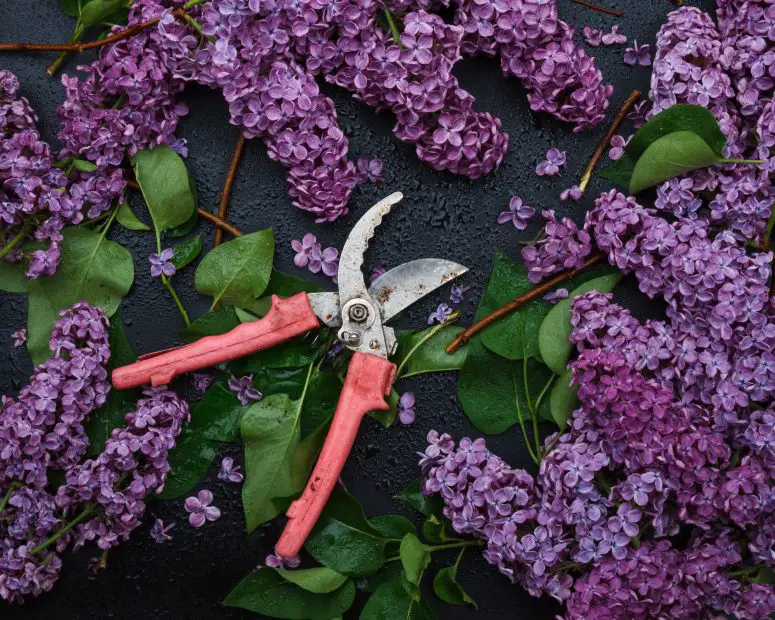Few flowers capture the heart quite like lilacs. Their sweet fragrance, soft pastel colors, and old-fashioned charm make them a treasured sign of spring in gardens across the world. But the magic of lilacs doesn’t have to stop with just one plant—you can grow more of them yourself, right from your own backyard.
Learning how to propagate lilacs is a simple, rewarding way to expand your garden or share the beauty with friends. Whether you’re a seasoned gardener or just starting out, creating new lilac shrubs from cuttings, suckers, or seeds lets you multiply what you love—and enjoy the blooms for many years to come.
Understanding Lilac Propagation

Propagating lilacs means reproducing the plant to grow new, genetically identical shrubs from a parent plant. This process allows gardeners to preserve the beauty, fragrance, and growth habits of their favorite lilac varieties without purchasing new shrubs. It’s not only a budget-friendly gardening technique but also a way to preserve heirloom cultivars that may not be available commercially.
There are several methods to propagate lilacs, each with unique advantages and levels of difficulty. The most common and practical methods include propagating from softwood cuttings, transplanting root suckers, using layering techniques, and starting from seeds. Each method requires a different approach, but all aim to help the new plant develop strong roots and eventually bloom like the original shrub.
Cuttings are ideal for preserving specific cultivars, especially hybrids that won’t grow true from seed. Suckers are often the easiest to transplant because they already have a root system, while layering allows a branch to root while still attached to the parent plant, reducing transplant shock. Propagating from seeds, though more time-consuming and less predictable, can be rewarding for those interested in growing species lilacs or experimenting with cross-pollination.
Understanding how lilacs reproduce also helps you choose the best time and conditions for propagation. Since lilacs are deciduous shrubs that bloom on old wood, timing is everything—from cutting collection to transplanting and root development. With the right method and proper care, propagated lilacs will thrive and reward your efforts with the same lush, fragrant blooms you know and love.
Choosing the Right Lilac Variety to Propagate
When to Propagate Lilacs
Timing plays a crucial role in successful lilac propagation. Each propagation method has its ideal season, and choosing the right time ensures stronger root development and healthier plants.
For softwood cuttings, the best time is late spring to early summer, typically from May to early July, depending on your climate. During this period, new growth is still flexible but mature enough to root. Cuttings taken too early may wilt quickly, while those taken too late might become too woody and resist rooting.
If you’re using root suckers, the ideal time to dig and transplant them is in early spring before leaf-out, or in fall after the foliage has dropped. These cool, dormant periods reduce stress on the plant and allow the sucker to focus its energy on establishing roots rather than top growth.
Layering is best done in early spring or late summer when branches are supple and temperatures are mild. The branch will stay attached to the parent shrub while roots form, often taking several months before it’s ready for separation.
Seed propagation, though less common, should begin in fall or early winter. Lilac seeds benefit from a period of cold stratification to break dormancy. After this chilling period, they can be sown indoors in late winter or directly outdoors in early spring.
By understanding the natural growth cycle of lilacs and matching your propagation method to the right season, you’ll improve your chances of growing strong, resilient shrubs ready to bloom in seasons to come.
Propagating Lilacs from Softwood Cuttings
Propagating lilacs from softwood cuttings is one of the most effective and widely used methods to produce genetically identical plants. Softwood cuttings are taken from the current season’s new growth—tender, green, and flexible stems that haven’t yet become woody. This process is ideal for gardeners who want faster results compared to starting from seeds.
The best time to take softwood cuttings is in late spring to early summer, when the plant is actively growing but the stems are still pliable. Select a healthy, non-flowering shoot about 4 to 6 inches long, and cut it early in the morning when moisture levels are highest. Remove the lower leaves and keep only a few leaves at the top to reduce water loss. If the remaining leaves are large, cut them in half to conserve energy.
To boost success, dip the cut end in rooting hormone before planting it in a well-draining medium like a mix of perlite and peat moss or coarse sand. Insert the cutting deep enough to support itself, typically about 2 inches, and gently firm the soil around it. Water lightly and place the container in a warm, bright area out of direct sunlight—ideally under a plastic dome or a clear bag to maintain humidity.
Keep the growing medium evenly moist but not soggy. Within 4 to 6 weeks, roots should begin to develop. You can test by gently tugging on the cutting—resistance indicates rooting has started. Once roots are well established and at least 1–2 inches long, the young lilac can be gradually acclimated to outdoor conditions and transplanted into a larger pot or garden bed.
With patience and attentive care, propagating from softwood cuttings offers a satisfying way to expand your lilac collection and share these fragrant shrubs with others.
Propagating Lilacs from Hardwood Cuttings
Propagating lilacs from hardwood cuttings is a reliable method often done in late fall or early winter, after the plant has gone dormant. This technique uses mature, woody stems from the current season’s growth, which root more slowly but are sturdier and easier to handle than softwood.
To begin, choose a healthy, pencil-thick stem that is about 6 to 8 inches long. Cut it just below a leaf node and remove any remaining leaves. Make sure the cutting has at least two nodes—one for rooting and one for future growth. Dip the bottom end in rooting hormone to improve success and insert it into a well-draining, moist medium like sand, perlite, or a peat-based mix.
Place the cuttings in a cold frame or an unheated greenhouse, or bury them in a sheltered area of the garden with only a few inches exposed above soil. Keep the medium moist throughout the winter. Rooting often begins in early spring as temperatures rise, and the cuttings can be transplanted once they show signs of new growth.
Although this method requires more time and patience, hardwood cuttings are durable and have a high success rate when properly cared for, making them ideal for propagating multiple lilacs at once.
Propagating Lilacs by Dividing Suckers
Dividing suckers is the simplest and fastest way to propagate lilacs. Suckers are shoots that grow from the base or roots of mature lilac shrubs. These offshoots already have a root system, making them easy to transplant with high success.
The best time to divide suckers is in early spring or fall, when the plant is dormant. Choose a healthy sucker at least 6 inches tall and located a short distance from the main trunk. Use a sharp spade to carefully dig around the sucker, preserving as many roots as possible. Cut the connecting root cleanly to separate it from the mother plant.
Replant the sucker immediately in well-draining soil in a sunny location, and water thoroughly. With minimal stress and proper care, divided suckers often establish quickly and begin growing within weeks. This low-effort method is perfect for gardeners who want to multiply existing lilacs without waiting for cuttings to root.
Layering Lilacs for Propagation
Layering is a low-maintenance yet highly effective method of lilac propagation that works particularly well for gardeners who prefer not to disturb the parent plant too much. This technique involves bending a low, flexible branch down to the ground and encouraging it to root while still attached to the shrub. It’s a slow but nearly foolproof process that results in a strong, self-sufficient new lilac.
The best time to start layering is in early spring or late summer, when the plant is actively growing. Choose a young, pliable stem near the base of the lilac and gently bend it down to touch the soil. Where the stem makes contact with the ground, lightly scrape or wound the underside of the branch to expose the cambium layer—this stimulates root formation. Apply a small amount of rooting hormone to the wounded area if desired.
Secure the wounded section into the soil with a U-shaped pin, landscape staple, or a rock, and cover it with loose soil or compost. Leave the tip of the stem above ground to continue growing. Keep the soil moist throughout the growing season to support root development.
Roots typically form within a few months, but some layers may need until the following spring to fully establish. Once the new roots are well developed, the young lilac can be cut from the parent plant and transplanted to its permanent location. Layering requires little effort or equipment and has a high success rate, especially with older lilac varieties that produce long, flexible stems.
Propagating Lilacs from Seeds
Growing lilacs from seeds is a fascinating but slow method of propagation, often chosen by patient gardeners or plant breeders looking to develop new varieties. Unlike cloning from cuttings or suckers, seed propagation introduces genetic variation, which means the new plants may not be identical to the parent shrub in terms of bloom color, size, or fragrance.
Lilac seeds are found inside the dried seed pods that form after flowers fade. To propagate from seed, you’ll need to collect mature pods in late summer or early fall. Once collected, allow them to dry fully, then extract and clean the seeds. Lilac seeds require a cold stratification period to germinate—this mimics winter conditions and breaks seed dormancy.
To stratify lilac seeds, place them in a moist paper towel or sand inside a sealed plastic bag, then refrigerate them for 30 to 60 days. After stratification, sow the seeds in small pots filled with a seed-starting mix. Keep them in a warm, bright spot, and maintain even moisture.
Germination may take several weeks to months. Once seedlings emerge and develop a few sets of true leaves, transplant them into larger pots or into the garden in spring. Be aware that seed-grown lilacs may take 3 to 7 years to flower and could differ from the parent plant in appearance or scent.
While slower and less predictable than other methods, propagating lilacs from seeds can be highly rewarding, especially for those who enjoy experimenting or growing unique varieties from scratch.
Caring for Newly Propagated Lilacs
Common Mistakes When Propagating Lilacs
Using the Wrong Type of Cutting
One of the most frequent mistakes is choosing the wrong type of cutting. Many gardeners use wood that’s too mature or too soft, which prevents successful rooting. Softwood cuttings should be taken in early summer when the stems are flexible but not tender. Hardwood cuttings are best collected in late fall or early winter, once the plant is dormant.
Incorrect Timing
Trying to propagate at the wrong time of year can lead to failure. Taking cuttings during peak summer heat or winter cold stresses the plant material. Dividing suckers should be done in early spring or fall to minimize transplant shock and give roots time to establish before extreme weather hits.
Poor Tool Hygiene
Failing to sterilize your tools before taking cuttings can spread fungal or bacterial diseases. Always use sharp, clean pruners, and disinfect them with alcohol or a bleach solution between uses to prevent infections.
Using the Wrong Soil Mix
Regular garden soil is often too heavy or poorly drained for successful propagation. Lilac cuttings require a light, well-draining medium—ideally a mix of coarse sand and peat moss or vermiculite—to avoid rot and support healthy root formation.
Overwatering or Underwatering
Both overwatering and underwatering are harmful. Too much moisture leads to soggy soil and stem rot, while letting the cuttings dry out halts root development. Maintain consistent, light moisture—never soaking wet, never bone dry—especially during the first few weeks.
Skipping Rooting Hormone
While optional, not using rooting hormone often reduces success rates. Lilacs can be slow to root, and dipping cuttings in hormone powder boosts both the speed and chances of root development, especially for hardwood cuttings.
Lack of Humidity or Protection
Lilac cuttings lose moisture easily through their leaves. Without covering them with a clear plastic dome or bag to create humidity, they often wilt before rooting. However, you must also ensure ventilation to prevent mold and mildew caused by stagnant air and excess moisture.
Tapping Suckers Too Early
When propagating from suckers, separating them too early—before they develop strong roots—is a common mistake. Suckers should have at least 3–4 inches (7–10 cm) of healthy root growth before being moved or replanted.
Ignoring Seed Stratification
If growing lilacs from seed, skipping cold stratification is a major issue. Lilac seeds need to be chilled in moist conditions for 30 to 60 days to break dormancy and trigger germination. Planting unstratified seeds often leads to failure.
Lack of Patience
Propagation takes time, and impatience can ruin your efforts. Many gardeners dig up cuttings too early or move young plants before they’re ready. Rooting may take 4–8 weeks, and it can take 2–3 years for propagated lilacs to flower. Consistency and patience are key.
Long-Term Benefits of Propagating Lilacs
Propagating lilacs offers more than just the satisfaction of multiplying your garden’s beauty—it provides long-term rewards that can transform your landscape and gardening experience for years to come. Once established, home-propagated lilacs become resilient, low-maintenance shrubs that return stunning spring blooms season after season. They also develop deep root systems adapted to your local soil, making them better suited to thrive without constant intervention.
One of the biggest advantages is the ability to maintain genetic consistency, especially when propagating heirloom or rare varieties. Unlike store-bought lilacs that may differ slightly in flower color, fragrance, or form, propagated plants from your garden will reliably reflect the parent plant’s qualities. Over time, this builds a more cohesive and personalized garden display.
Financially, propagation is cost-effective. Rather than buying new shrubs, you can expand your lilac collection or fill out large borders at little to no cost. These free plants can also be gifted or shared, strengthening community bonds among gardeners. In landscapes where lilacs form privacy hedges or visual focal points, propagation allows you to gradually create a dense, uniform row of shrubs at your own pace.
Finally, lilacs propagated in your own garden are often more environmentally resilient. Having adapted from the beginning to your microclimate, they tend to be hardier in local conditions and better able to withstand pests or drought once established. In the long run, propagation is not only a practical gardening skill—it’s a meaningful investment in beauty, resilience, and sustainability.
Frequently Asked Questions About How to Propagate Lilacs
How long does it take for lilac cuttings to root?
Softwood lilac cuttings typically take 4 to 6 weeks to develop roots under the right conditions, such as high humidity, indirect sunlight, and consistent moisture. Hardwood cuttings take longer—often 3 to 6 months—since they are dormant and root slowly through the winter. If no roots appear after 2 months for softwood or 6 months for hardwood, the cutting likely failed and should be discarded.
Can you propagate lilacs in water?
Technically, lilac cuttings can be placed in water, but this method is not recommended for successful propagation. While some roots might form in water, they are often weak and not suited for soil transition. Lilac cuttings root much better in a moist, well-draining propagation medium such as a mix of peat moss and perlite. This gives stronger roots that adapt well to transplanting.
What’s the best time of year to propagate lilacs?
The ideal time depends on the propagation method:
Softwood cuttings: late spring to early summer, when new growth is semi-flexible
Hardwood cuttings: late fall through early winter, during plant dormancy
Suckers: spring or early fall, when soil is moist and temperatures are mild
Layering: summer, when branches are supple and actively growing
Choosing the right season improves success by aligning propagation with the lilac’s natural growth cycle.
Will a lilac grown from a sucker bloom like the original plant?
Yes, a lilac propagated from a sucker will be genetically identical to the parent plant, meaning it will bloom with the same color, fragrance, and growth habit. Suckers are one of the most reliable propagation methods because they already have a root system and come directly from the base or roots of the original shrub. With proper care, sucker-grown lilacs typically begin blooming within 2 to 4 years.
How do I know if my lilac cutting has rooted successfully?
You can check for rooting by gently tugging on the cutting after a few weeks. If you feel resistance, roots are likely forming. Other signs of successful rooting include:
New leaf growth or buds developing at the top of the cutting
No signs of rot, wilting, or blackening of the stem
A firm, green stem that stays healthy over time
Once rooting is confirmed, gradually expose the cutting to outdoor conditions and prepare to transplant it into the garden.
Conclusion
Propagating lilacs is a rewarding way to expand your garden and enjoy more of their classic beauty. With the right timing, method, and care, you can grow new shrubs that bloom just as beautifully as the parent plant. Whether you use cuttings, suckers, or layering, patience and proper technique will lead to lasting success. Each new lilac you grow brings the promise of fragrant spring blooms and a deeper connection to your garden.






